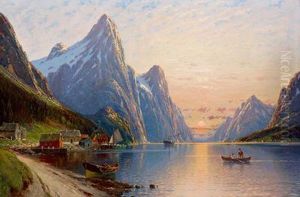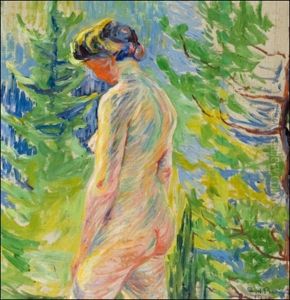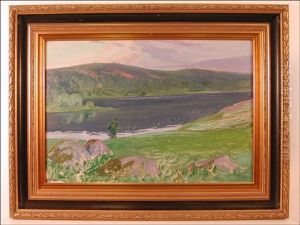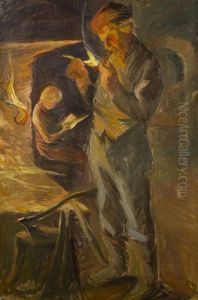Carl Bengts Paintings
Carl Bengts was a Finnish painter, born on January 12, 1876, in Pargas, Finland. He emerged as a prominent figure in the Finnish art scene during the late 19th and early 20th centuries. Bengts was well-regarded for his contributions to landscape and portrait painting, as well as for his role in the development of Finnish art during a period of national awakening and cultural flourishing.
Educated initially at the Drawing School of the Finnish Art Society in Helsinki, Bengts furthered his studies abroad, which was common among Nordic artists of the time. He spent significant periods in Paris, France, where he was influenced by contemporary European movements, particularly Impressionism. This influence is evident in his use of light and color, which added a vibrant quality to his depictions of Finnish landscapes and daily life.
Throughout his career, Bengts participated in numerous exhibitions, both in Finland and internationally. His works were well received, and he gained recognition for his ability to capture the essence of the Finnish landscape and the spirit of its people. Bengts was also known for his portraits, which often depicted notable Finnish personalities of his time. His approach to portraiture was characterized by a keen attention to detail and a profound ability to capture the subject's personality.
Carl Bengts was not only a painter but also a teacher and influencer in the Finnish art community. He played a significant role in the artistic education of the time, passing on his knowledge and skills to a younger generation of Finnish artists. His contributions to Finnish art were recognized by his contemporaries, and his legacy has continued to be celebrated in Finland.
Carl Bengts passed away on June 17, 1934, in Helsinki, Finland. His body of work remains a testament to his skills and his dedication to portraying the beauty of Finland and its people. Bengts' paintings are held in high regard and can be found in major Finnish art collections, including the Ateneum Art Museum in Helsinki, which houses a significant number of his works. His life and art continue to inspire and influence Finnish artists and art enthusiasts, making him a lasting figure in the history of Finnish art.





